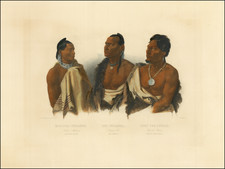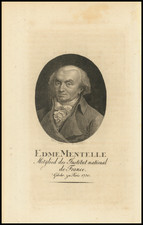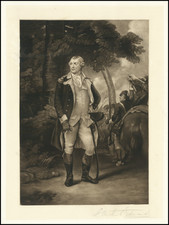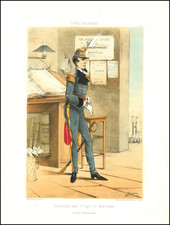The Most Iconic Native American Image of the 19th Century.
Karl Bodmer's Pehriska-Ruhpa. Moennitarri Warrior in the Costume of the Dog Danse. stands as a quintessential exemplar of 19th-century ethnographic art, regarded as one of the most vivid and enduring depictions of a Native American Indian from this era. This magnificent hand-colored aquatint, etching, and mezzotint offers an intimate glimpse into the ceremonial life of the Hidatsa Dog Society, a testament to the richness and vibrancy of indigenous cultures.
In the early 1830s, Swiss painter Karl Bodmer embarked on a historic expedition into the American West alongside German explorer Prince Maximilian zu Wied-Neuwied. Their shared ambition was to document the people, landscapes, and wildlife they encountered along their journey. This expedition would become a seminal moment in ethnographic art and natural history, significantly contributing to the understanding of Native American societies. It was during their winter stay at Fort Clark, a significant trading post in what is now North Dakota, where they encountered and interacted with the Mandan and Hidatsa tribes. It was in this context, in March 1834, that Bodmer created the drawing that would lead to Pehriska-Ruhpa. Moennitarri Warrior in the Costume of the Dog Danse. This was more than mere art; it was an endeavor of cultural preservation, capturing the essence of a world on the precipice of profound change.
At the heart of this engrossing tableau is the striking figure of Péhriska-Rúhpa (Two Ravens), a commanding leader of his society. Depicted in his ceremonial attire, frozen mid-pose, the warrior projects an electrifying sense of immediacy and movement. The striking static image is charged with an invigorating energy that permeates the boundaries of time and space.
Each intricate detail of the warrior's attire captivates the viewer, an invitation to delve deeper into the rich tapestry of the Hidatsa culture. The glossy black feathers of his headdress, meticulously tipped with white, stand stark against the vibrant red of the central plume. This accurate rendering of details not only illuminates the aesthetics of the Hidatsa but also provides invaluable ethnographic insight.
Péhriska-Rúhpa's attire, complete with the rattle crafted from small hooves or claws affixed to a beaded stick, serves as a vivid testament to the intricate customs and practices of the Hidatsa Dog Society. This society was one among many within the Hidatsa culture, each with its unique rules, rituals, dances, and regalia - a rich tapestry of tradition that Bodmer has managed to capture within a single portrait.
Ultimately, the significance of Bodmer's masterpiece extends beyond its aesthetic allure; it is a critical cultural artifact that sheds light on an often-overlooked historical era. As one of the most iconic images of a Native American Indian from the 19th century, it provides an essential reference for scholars, historians, and those wishing to deepen their understanding and appreciation of the rich heritage of Native American societies.
State
Ruud's first state (of 3) without the added date.












![(Native American Portrait) Man-ce-muckt [Watercolor of Mancemuckt, Chief of the Indians of the Dalles of the Columbia River (i.e. Chief of the Skeen), after Paul Kane]](https://storage.googleapis.com/raremaps/img/small/95030.jpg)

![[ British Religious Prophetess Joanna Southcott ] A Medical Inspection or Miracles will Never Cease](https://storage.googleapis.com/raremaps/img/small/87382.jpg)